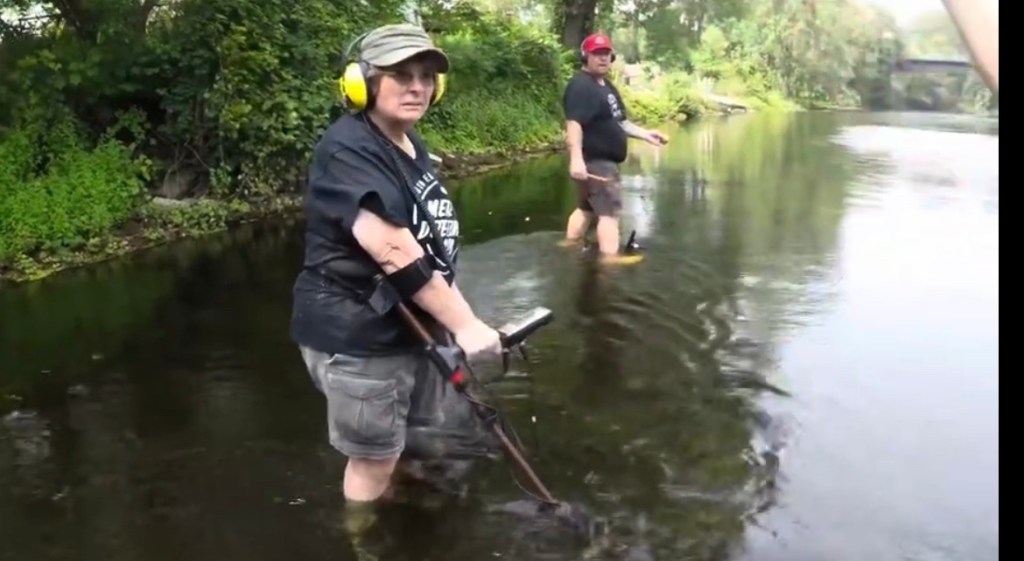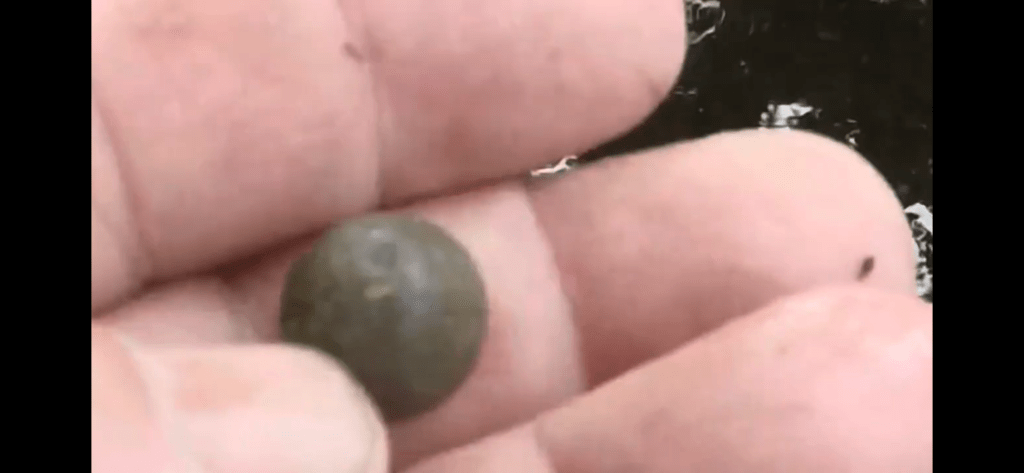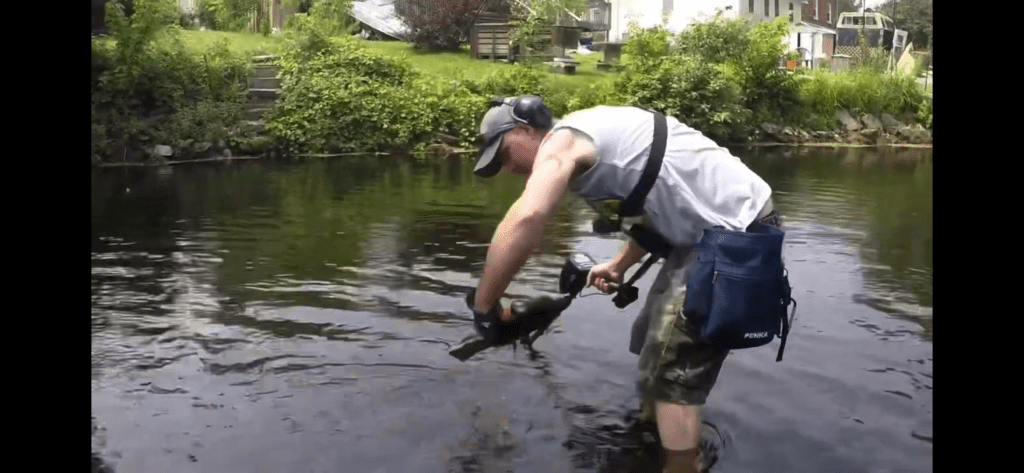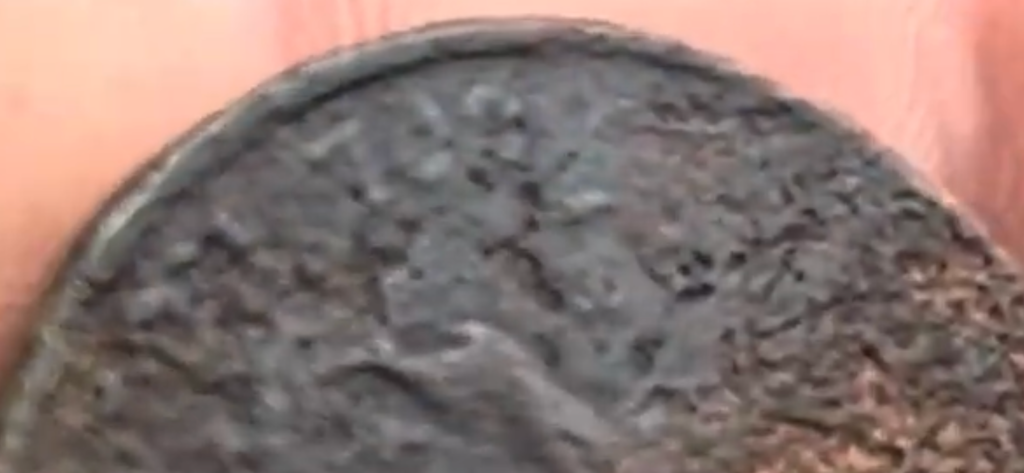(Continuing to Unearth History in Yarker ONT)
The small town of Yarker, Ontario, nestled along the banks of the Napanee River In southeastern Ontario, held a secret waiting to be discovered. Eager to unearth its hidden treasures, I decided to enlist the help of two metal detecting enthusiasts, Ryan and Gail, (members of the Southeastern Ontario Metal Detecting Club , AKA- SEOMDC).

Little did we know that our adventure would not only lead us to modern-day artifacts but also reveal glimpses of history spanning several centuries.
Chapter 1: The Journey Begins
Excitement filled the air as Ryan, Gail, and I embarked on our quest to explore the mysteries of the Napanee River. Armed with metal detectors, shovels, and a deep passion for uncovering the past, we set foot on the riverbanks of Yarker. The tranquil surroundings and the gentle flow of the river seemed to beckon us forward, promising untold stories waiting to be unraveled. I personally Was finding modern pennies from late 1980s to early 1960s, and as my detector swept across the river bottom I heard a loud signal the echo ringing in my ear, I checked the VDI display on my machine and it read a 45. 45 usually suggests copper on the NOKTA Legend, I could tell it was a small signal which suggested yet another penny. As I carefully lent over into the water I reach down with my left hand and carefully whisked away some of the loose sand on top of the river bottom. My suspicions my suspicions correct the silhouette of yet another penny seemed to reveal itself.
As I brought the penny to the water surface and carefully brushed away any sand particles or debris sticking to the coin itself, this particular coin was just a little older. I now held in my hand my eldest legit detected Canadian one cent one that I had not dug from a seated hunt but one that has been found on a treasure hunt looking for old relics and that had probably been dropped by a person that own this penny decades ago. The penny was a 1935 King George the 5th small sent. My excitement grew as I put the coin into my pouch for safekeeping’s and swiftly started swinging my detector back and forth slowly across the river bottom floor once again.

The level of the river is low this time of year between 12 to 40 inches in parts. GAIL being the shortest member of the group would have a hard time in the deepest reaches of the river at this time of year, but for Ryan and I it was fair game
Modern Discoveries:

As we eagerly swept our metal detectors across the riverbed, our efforts were soon rewarded. Among the modern-day debris that littered the riverbed, we found a collection of Canadian and US pennies, remnants of daily transactions and forgotten wishes. A peculiar find caught our attention—an unmistakable modern quarter, bearing the scars of a pellet gun’s impact. It served as a reminder that even in the present, history could be found in unexpected forms.
Chapter 3: Glimpses of the Past
Delving deeper into the river’s secrets, we encountered artifacts that hinted at a bygone era. Gail’s keen eye led her to an 1800s French musket ball, a testament to the region’s historical conflicts. She also stumbled upon an old fishing lure, evoking memories of simpler times when the river provided sustenance and leisure for local communities. Perhaps the most intriguing discovery was a tensor bandage clip, its aged appearance suggesting a connection to a time before the horrors of World War I.


Chapter 4: Uncovering Ancient Relics

As our metal detectors emitted faint signals amidst the river’s sediment, we felt a surge of anticipation. It was during one such moment that I unearthed a Canadian penny from 1935, bearing the profile of King George V. Its presence transported us back to a time of economic hardship and societal changes. However, the most awe-inspiring discoveries were yet to come.
Chapter 5: Echoes of Indigenous Heritage

In a moment of serendipity, I stumbled upon an ancient native flint napped stone tool—a testament to the indigenous peoples who had once thrived along the banks of the Napanee River. Possibly dating back over a thousand years, the tool whispered stories of survival, craftsmanship, and a deep connection to the land. It served as a reminder of the rich heritage that preceded the arrival of European settlers.
Stone tools have a long history in southern Ontario, dating back thousands of years. The earliest evidence of human activity and the use of stone tools in the region can be traced to the Paleo-Indian period, which began around 13,000 years ago and lasted until approximately 9,000 years ago.
During this time, the first human populations entered what is now southern Ontario after the last ice age. These early inhabitants, known as Paleo-Indians, relied on stone tools for various purposes such as hunting, butchering animals, and processing plant materials.
The development and use of stone tools continued throughout the subsequent Archaic period (around 9,000 to 3,000 years ago) and the Woodland period (approximately 3,000 to 1,000 years ago). Different cultures and groups in southern Ontario during these periods had their own unique stone tool traditions, reflecting technological advancements and cultural adaptations over time.
It’s important to note that the specific age of stone tools in southern Ontario can vary depending on the archaeological site and the specific cultural period being studied. Archaeologists use various dating techniques, including radiocarbon dating and stratigraphic analysis, to determine the age of artifacts and archaeological sites.
So it may be very difficult to definitively date this stone tool but I would assume it to be at the very least 1000 years old which makes this item my oldest find in my collection. (By far)
Chapter 6: Ryan’s Iron Trail

While magnet fishing from atop of the old train bridge, Ryan’s metal detector led him to a trail of iron objects. Railway spikes, weathered by time, emerged from the riverbed, unraveling the history of the town’s once bustling railway industry.

Additionally, Ryan’s finds included $1.06 in change, remnants of bygone transactions that had slipped through the cracks of history.

Amidst the iron objects, he discovered an old tarnished teaspoon
Chapter 7: I Find Real History

So close to the end of our hunt I came across a strange sound on the detector. It was faint yet rang high, and had silver type numbers showing up on the machines VDI. It also showed a shallow signal as well. I had never come across this before. The strange combination of numbers and sounds intrigued me so I had no other choice but to reveal what this unique signal was.
It seemed the item was in a small crack in between 2 very large rocks and barely had enough room for my small pinky finger to fit into. I reached for my digging tool to help loosen the item and to possibly manoeuvre the item out from between the 2 large rocks.
After several minutes, success, I saw the edge of what appeared to be the eggs of a coin, although it seemed larger than normal, was it possibly a large cent from the turn of the century? I had to know.
As I meticulously wiggled the coin out of the crack I saw that it was significantly larger that a turn of the century Canadian large cent.

As I held the coin under the water I called for Ryan to come see what I had found. As Ryan, Gail, and I were all there hunting together, I wanted for everyone to be present when this item was revealed. As they arrived to my location & I slowly pulled the coin from the rivers bottom, it was evident that this coin was nothing any of us had seen before. It was larger than any coin I had ever come across.
After very close examination between all of us, none of us could agree on what the date on the coin actually read. The coin was so crusted over that it was near impossible to read. The only thing we could agree on, was the fact the coin was not from the 1800’s but was Infact from earlier times. We all saw a distinct 3 numbers and the first being a lucky #7. This put the coin into the 1700’s range. The first 1700’s coin I had ever even laid eyes on.
After we all had a hard time agreeing on the remainder 2 numbers I decided to reach out to 2 of the Southeastern Ontario Metal Detecting Club Members with the most experience with old coins and after in person careful examination, the consensus is that the coin is from 1708 and is most likely a French Livre. This makes this particular coin an extremely rare find. It was from the era or King Louis the ( XIV ) who’s reign was from 1650 to 1714 and also makes this coin the oldest discovered coin dug on Canadian soil within our metal detecting club members to date.

In the year 1708, the Livre was the currency of France. It’s important to note that the value of currencies and purchasing power can vary significantly over time, so it’s challenging to provide an exact answer. However, I can provide some general information about prices and goods during that period.

During the early 18th century, the purchasing power of the Livre could vary depending on various factors such as location, inflation, and economic conditions. In general, 1 Livre could buy a range of basic goods and services. Here are some examples:
1. Food: With 1 Livre, you could purchase a few pounds of bread or grain, or a small amount of meat or fish, depending on the quality and availability of these items. Food prices could vary depending on the region and specific circumstances.
2. Clothing: 1 Livre might be sufficient to buy a simple garment, such as a shirt or a pair of stockings. However, more elaborate or luxurious clothing items would have been significantly more expensive.
3. Housing: 1 Livre would not be sufficient to cover housing expenses. Rent prices and property costs varied greatly depending on the location, size, and quality of the accommodation.
4. Services: 1 Livre might cover the cost of various services such as a haircut, a simple meal at a tavern, or a short carriage ride within a city. Prices for services were generally lower compared to today’s standards.
It’s important to keep in mind that these are rough estimations, and the actual purchasing power of 1 Livre in 1708 would depend on many factors. Additionally, economic conditions, inflation, and regional differences would influence prices and purchasing power.
A few other properties in Yarker have peaked my interest and I have attained permission to a few of them, so I can’t wait to get started and share it with you soon.